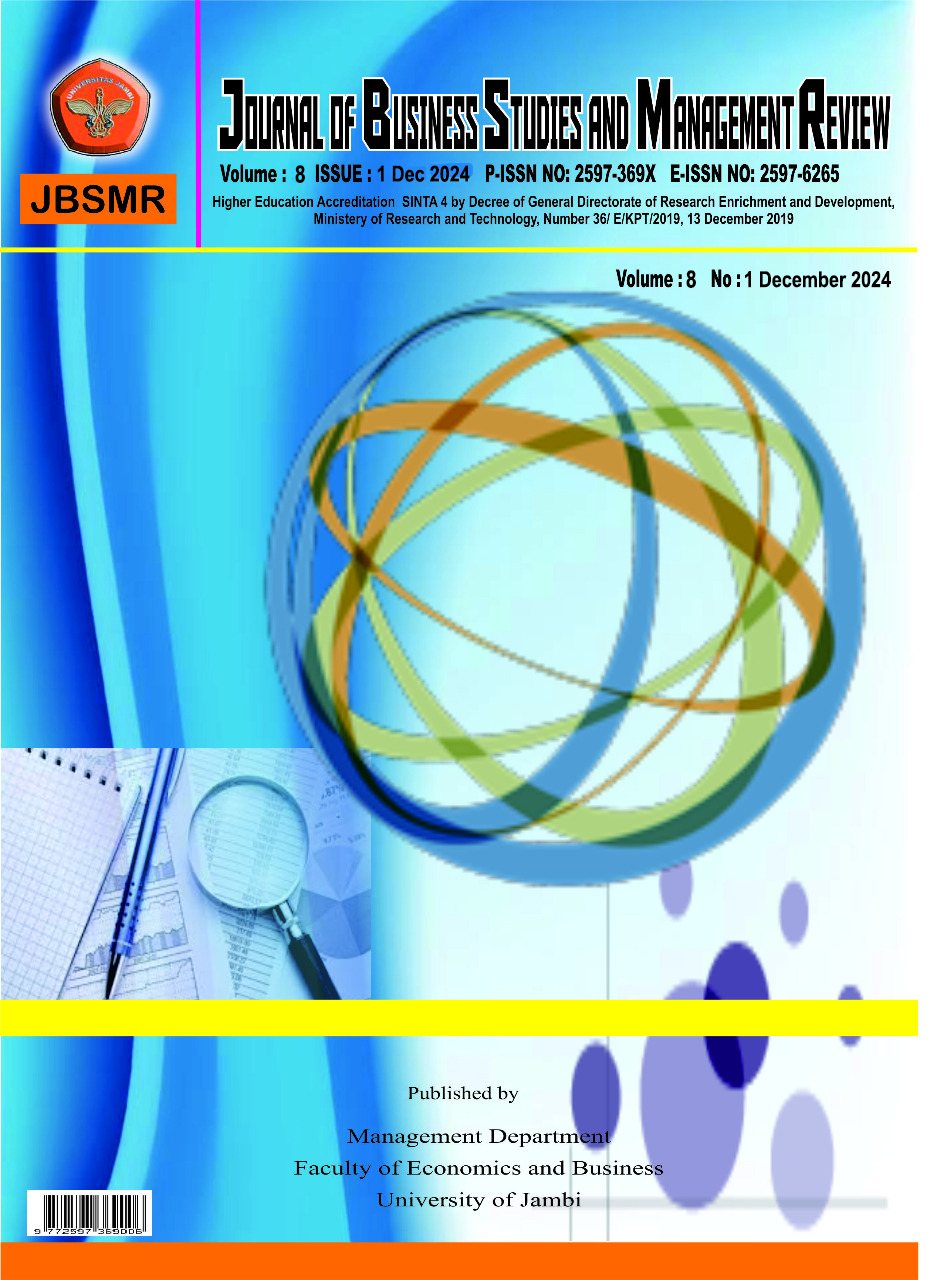DETECTION OF IMPROVED EMPLOYEE PERFORMANCE BY USING WORK DISCIPLINE MEDIATORS
DOI:
https://doi.org/10.22437/jbsmr.v8i1.38235Keywords:
Employee Performance, Work Dicipline, Online Attendance, CompesationAbstract
High employee performance can increase productivity, efficiency, and work quality. In addition, employees who perform well can also create a positive work environment, foster work enthusiasm, and increase customer satisfaction. The purpose of this study is to analyze the improvement of employee performance using work discipline mediation. This study was conducted on employees of a cleaning service and gardening company in West Jakarta, with a sample of 50 employees. The data analysis method in this study was quantitative, using the Partial Least Square (PLS) analysis tool. The results of the study showed that online attendance did not have a significant effect on employee performance. On the other hand, compensation had a positive and significant effect on employee performance. Furthermore, both online attendance and compensation were found to have a positive and significant effect on work discipline. What is interesting is that work discipline succeeded in becoming a mediator of the effect of online attendance on employee performance, but failed as a mediator of the effect of compensation on employee performance. These findings emphasize the importance of effective compensation management and the role of work discipline in facilitating the effect of online attendance on performance. Overall, the results of this study provide new insights for managers and Human Resources (HR) professionals in planning strategies to improve employee performance through compensation management and work discipline.
Downloads
Downloads
Published
How to Cite
Issue
Section
License
Copyright (c) 2024 Suprapto Suprapto, Anik Hermaningsih, Sri Kaidah

This work is licensed under a Creative Commons Attribution 4.0 International License.

This work is licensed under a Creative Commons Attribution 4.0 International License.





.png)




